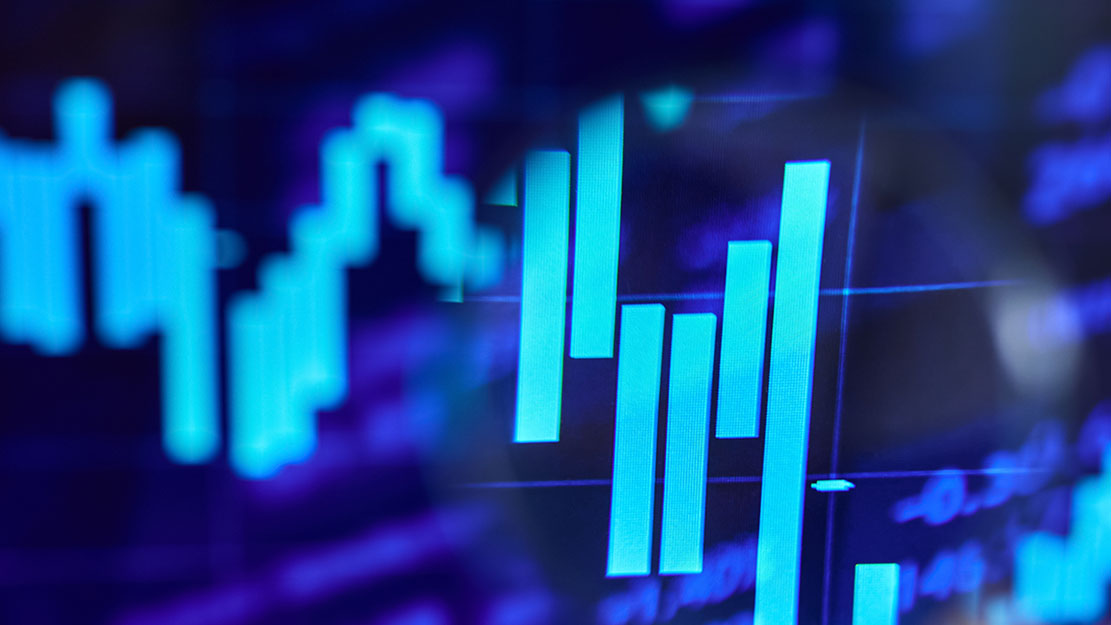Shep Perkins, CFA
Chief Investment Officer, Equities
Darren A. Jaroch, CFA
Portfolio Manager
Putnam Large Cap Value Fund
Putnam International Value Fund
Lauren B. DeMore, CFA
Assistant Portfolio Manager
Putnam Large Cap Value Fund
Putnam International Value Fund
Many market observers enjoy the growth-versus-value debate — the challenge of calling the “jump ball” between these investment styles. This year has been no exception, especially throughout the summer, as we watched a significant value rally vanish almost as quickly as it began. As evidenced by the past 10 months — or even the past 10 years — attempting to predict the leader of the growth/value race can be a bit of a fool’s errand.
In our view, successful value investors don’t try to play on the twists and turns of sentiment. Positioning a value portfolio goes much deeper than trying to chase trends in investment styles, economic growth, or interest rates. At the same time, we believe the durability of this recent value rally is being underestimated. Based on our analysis, the case for value stocks, particularly in international markets, remains compelling.
The dramatic style rotation of 2020
For many value investors, November 9, 2020, was a big deal — a possible turning point for the style’s decades-long underperformance relative to growth. On that day, we learned of impressive efficacy results in Pfizer-BioNTech Covid-19 vaccine trials. Almost immediately, the market began pricing in a dramatic economic recovery, fueled by the prospects of a return to normal. It was combined with enormous pent-up demand from consumers yearning to spend savings that had reached all-time highs.
This sparked a value rally that gained steam as supply chain issues and sharply stronger demand for goods led to an increase in inflation expectations, interest rates, and bond yields. The 10-year U.S. Treasury yield rose from 0.65% on September 3, 2020, to 1.74% on March 31, 2021. This was good news for value investors, as a rebounding economy, some inflation, and modestly higher interest rates are typically key ingredients for a durable value rally.
Delta arrives and the rally departs
Almost to the day that the 10-year yield peaked in March, we saw growth stocks take the lead once again. What happened? Initial signals came from China. One of the first countries to emerge from the original Covid-19 lockdowns, China has served as a canary in the coal mine for an impending slowdown in global economic growth. New Covid-19 outbreaks in China, combined with declines in exports and services sector activity, halted the notion that global economies were “off to the races.”
The spread of the Delta variant of Covid-19 added to worries about the pace of recovery, and we continue to see the pendulum swing between style preferences. It hasn’t helped that we have no precedent or a playbook for a global pandemic and investors are reacting to every bit of Covid-19 news.
Interest rates matter for value portfolios
The direction of interest rates almost always impacts the performance of value stocks. We saw the value rally begin to falter when an extraordinarily dovish Federal Reserve, describing inflation as “transitory,” successfully managed inflation expectations down, bringing the 10-year yield down with them. Simple measures of valuation, such as price-to-book ratio, saw their dramatic outperformance come to a halt — demonstrating the sensitivity between rates and value stocks. We view the current low-rate environment as an unnatural state of affairs, mostly driven by policy, Fed dovishness, and control of inflation expectations.
What investors are missing
In our view, investors are overlooking the fact that interest rates, as measured by the 10-year yield, are still considerably higher than they were when the value rally began late last year. However, today’s generally higher rates — which should be good for value stocks — don’t seem to matter to investors distracted by Covid-19 and lower expectations for economic growth.
We also believe investors are missing a compelling valuation gap. Value stocks remain inexpensive relative to growth stocks and inexpensive relative to their own fundamentals. Growth stocks, on the other hand, remain expensive by historical measures. Outside the United States, this discount of value stocks, versus their history and versus growth stocks, is even more pronounced. Sectors such as banks and energy lag behind their U.S. peers in terms of share price recovery, making the case for international value stocks even more provocative.
Value stocks remain inexpensive relative to growth stocks and inexpensive relative to their own fundamentals.
Looking past the style preference pendulum
It’s important to recognize that growth and value are not mutually exclusive. Regardless of where a stock begins in the style universe, the winners in a value portfolio are those that are underappreciated and undervalued. They are companies that are poised to exceed expectations for earnings and revenue growth, that are more disciplined in their capital expenditures, and that will return more capital to shareholders than anticipated.
One component of our investment strategy is relative value — focusing on the valuation of a company compared with businesses in the same sector. What is the market underappreciating that makes a stock attractive relative to its peer group? This concept may have been lost on many investors in the early months of 2021, when we saw an emphasis on cheapness over quality. This tends to happen with a recovery trade at the start of a new cycle. Enthusiasm over an economic rebound leads investors to flock to the cheapest stocks, often with little regard for company fundamentals. Notably, this “cheapness rally” left behind higher-quality companies that became undervalued and presented a few opportune entry points.
This reinforces our belief in the importance of defining value daily. Once a year, the Russell 1000 Value Index is reconstituted, identifying a value universe of companies with lower price-to-book ratios and low growth rates. However, company fundamentals can change considerably over the course of 12 months; 2020 was a textbook example. In the June 2020 rebalance of the Russell indexes, for example, healthcare stocks shifted to the growth index following their outperformance over the previous 12 months. In the next index rebalance this past June, faltering performance sent healthcare stocks back into the value benchmark. Much more frequent analysis — we suggest daily — of the value universe is necessary to uncover the most compelling stocks, many of which may not currently be part of a value benchmark index.
Seeking to immunize portfolios for all markets
Of course, it is our goal to outperform in all markets, including in periods of extreme market declines and their recoveries and in a variety of interest-rate regimes. A number of our real-time, proprietary tools provide us with portfolio risk snapshots, and our portfolios undergo regular stress tests. These tests help determine how a portfolio is expected to perform if subjected to certain market, macroeconomic, or event stresses. Examples include severe declines in certain sectors or asset classes (such as financials amid the Lehman collapse), volatility in commodity prices, and completely unpredictable events like the 9/11 terrorist attacks.
When we review the results of the stress tests, we want to see that the implied active return over three months is neither largely positive or negative. This provides additional evidence that the portfolio will be driven by individual stock selection and, to the extent reasonably possible, will be immunized from external shocks, such as rising or falling interest rates.
Putting our portfolios to the test
Implied active 3-month returns in a range of conditions
Source: Putnam Research. Most current data available as of June 30, 2021. For illustration purposes only. Like the output of any model, this analysis may be subject to limitations, is not guaranteed, and may produce results that diverge from any past or future results. The VIX, or Cboe Volatility Index, is a real-time market index representing the market’s expectations for volatility over the coming 30 days.
Maintaining a balance on the style seesaw
When it comes to constructing a value portfolio, we believe balance is essential. For example, while we believe current interest rates are unsustainably low, the direction of rates is out of our control and is challenging to predict. We seek to manage interest-rate risk by maintaining a mix of holdings with varying interest-rate sensitivity. Banks, which generally underperform when rates decline, are balanced with housing-related companies, which tend to outperform when rates are declining. All these businesses have long-term fundamental strength — we believe they are the best among their peers — but the balance of upside and downside rate sensitivity helps provide a buffer when rates are volatile.
Learn more about Putnam’s value funds.

The views and opinions expressed are those of the authors, are subject to change with market conditions, and are not meant as investment advice.
Consider these risks before investing: International investing involves currency, economic, and political risks. Emerging-market securities carry illiquidity and volatility risks. Because the fund currently invests, and may in the future invest, significantly in European companies, the fund is particularly susceptible to economic, political, regulatory, or other events or conditions affecting issuers in Europe. Investments in small and/or midsize companies increase the risk of greater price fluctuations.
Value stocks may fail to rebound, and the market may not favor value-style investing. The value of investments in the fund’s portfolio may fall or fail to rise over extended periods of time for a variety of reasons, including general economic, political, or financial market conditions; investor sentiment and market perceptions; government actions; geopolitical events or changes; and factors related to a specific issuer, geography, industry, or sector. These and other factors may lead to increased volatility and reduced liquidity in the fund’s portfolio holdings. From time to time, the fund may invest a significant portion of its assets in companies in one or more related industries or sectors, which would make the fund more vulnerable to adverse developments affecting those industries or sectors. Risks associated with derivatives include increased investment exposure (which may be considered leverage) and, in the case of over-the-counter instruments, the potential inability to terminate or sell derivatives positions, and the potential failure of the other party to the instrument to meet its obligations.
Our investment techniques, analyses, and judgments may not produce the outcome we intend. The investments we select for the fund may not perform as well as other securities that we do not select for the fund. We, or the fund’s other service providers, may experience disruptions or operating errors that could have a negative effect on the fund. You can lose money by investing in the fund.
The Russell 2000 Index is an unmanaged index comprised of approximately 2,000 of the smallest companies in the Russell 3000 Index as measured by their market capitalization. You cannot invest directly in an index.
Frank Russell Company is the source and owner of the trademarks, service marks, and copyrights related to the Russell Indexes. Russell® is a trademark of Frank Russell Company.










